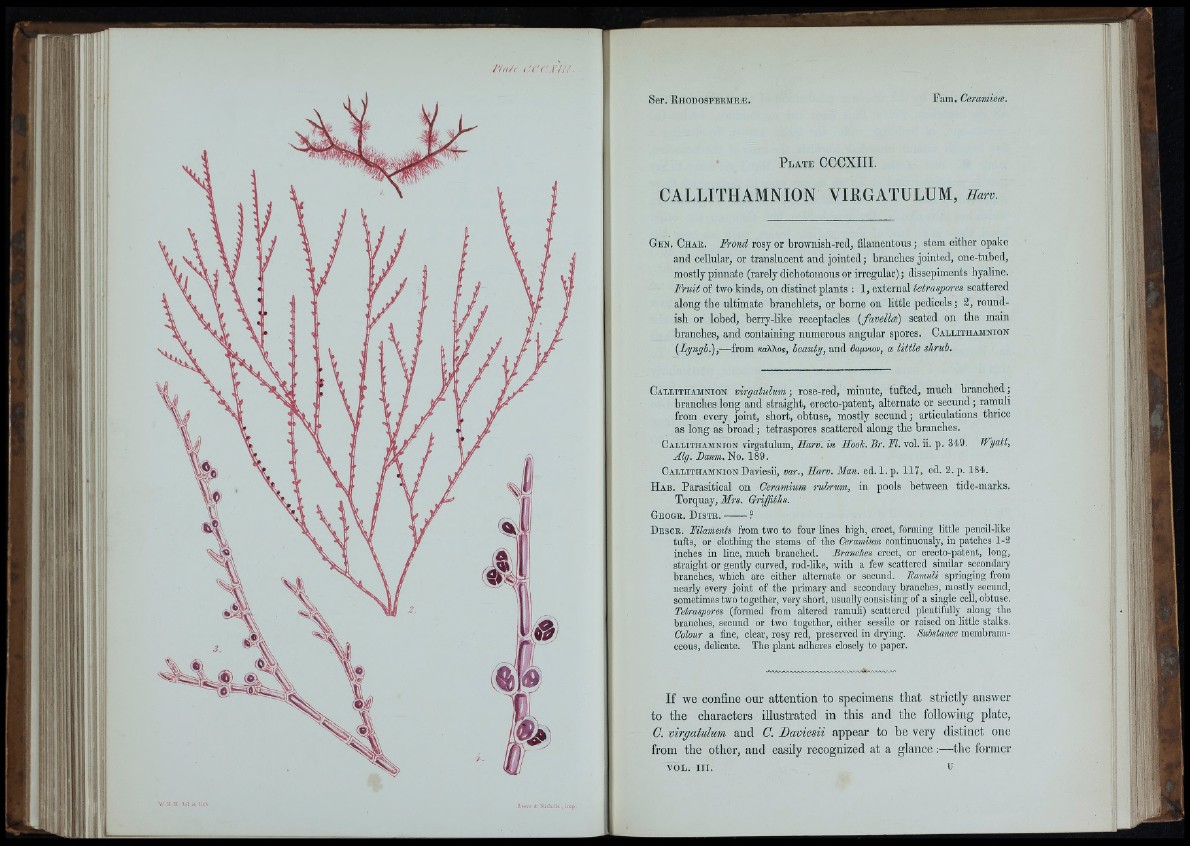
Ii
li
I itevE fe Niaioli .imp.
P l a t e CCCXIII.
CALLITHAMNION VIRGATULUM, iiarv.
G e n . C h a e . Frond rosy or brownish-red, filamentous; stem either opake
and cellular, or translucent and jointed; branches jointed, one-tubed,
mostly pinnate (rarely dichotomous or irregular); dissepiments hyaline.
F ru it of two kinds, on distinct plants : 1, external tetraspores scattered
along the ultimate branchlets, or borne on little pedicels; 2, roundish
or lobed, berry-hke receptacles {favellce) seated on the main
branches, and containing numerous angular spores. C a l l it h a m n io n
(L y n g h ),—from /coXXof, beauty, and bapviov, a little shrub.
C a l l it h a m n io n virgatulum ; rose-red, minute, tufted, much branched ;
branches long and straight, erecto-patent, alternate or secund ; ramuli
from every joint, short, obtuse, mostly secund ; artionlations thrice
as long as broad ; tetraspores scattered along the branches.
C a l l i t h a m n i o n virgatulum, H a n . in Hook. Br. FI. vol. ii. p . 349. Wyatt,
rfiÿ. D a w . No. 189.
Callithamnion Daviesii, var., Harv. Man. ed. 1. p. 117, ed. 2. p. 184.
H a b . Parasitical on Ceramium rubrum, in pools between tide-marks.
Torquay, Mrs. Griffiths.
G e o g k . D i s t e . ?
D e s c e . FilamsnM from two to four lines high, erect, forming little pencil-like
tufts, or clothing the stems of the Ceramium continuously, in patches 1-2
inches in line, much branched. Branches erect, or erecto-patent, long,
straight or gently cm-ved, rod-like, with a few scattered similar secondary
branches, which are either alternate or secund. Ramuli springing from
nearly every Joint of the primary and secondary branches, mostly secund,
sometimes two together, very short, usually consisting of a single cell, obtuse.
Tetraspores (formed from altered ramuli) scattered plentifully along the
branches, secund or two together, either sessile or raised on little stalks.
Colour a fine, clear, rosy red, preserved in drying. Substance membranaceous,
delicate. The plant adheres closely to paper.
If we confine our attention to specimens that strictly answer
to the characters illustrated in this and the following plate,
C. virgatulum and C. Daviesii appear to be very distinct one
from the other, and easily recognized at a glance:—the former